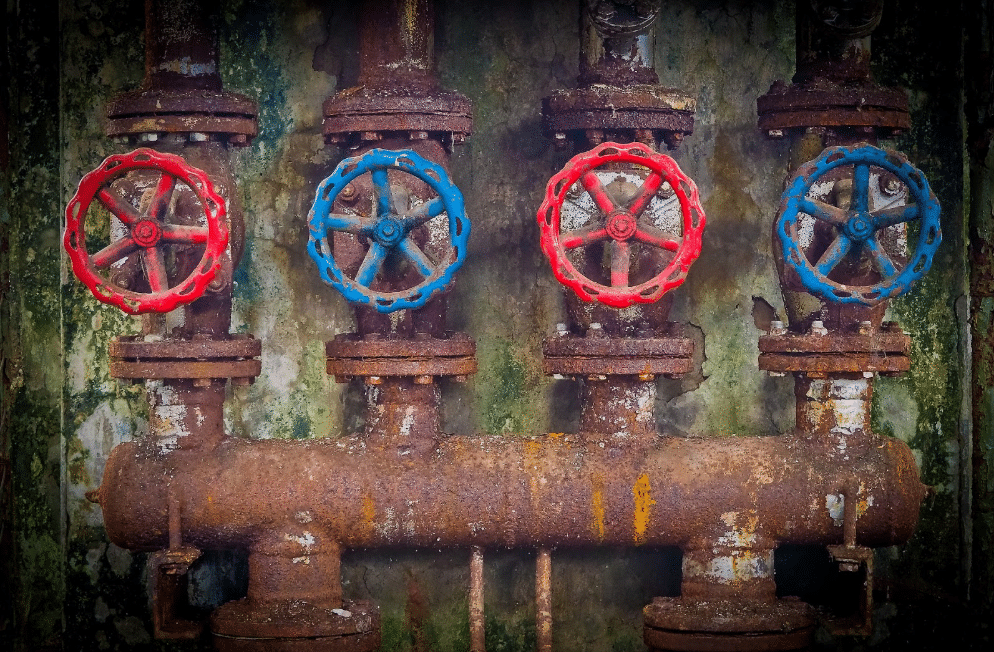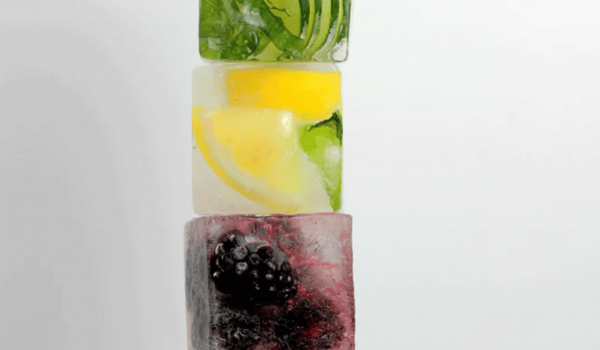You probably have some memory of playing outside as a child and taking a nice long drink straight from the garden hose. After all, why waste any precious moment of playtime to go inside for a drink of water? The tap water from the hose is the same as the tap water from the faucet! While that logic may be sound, what we didn’t know as children is that whether we were drinking from the faucet or the hose, we shouldn’t have been drinking that tap water at all. Tap water is the most common water source for U.S. citizens. Unfortunately, due to water infrastructure problems, the dangers of tap water often go undetected. This article will take the time to arm you with the proper knowledge of some tap water problems and potential solutions you can take as a consumer. In this article, we will reveal some of the water problems in the United States, the resulting dangers of tap water and the water infrastructure problems that cause these issues.
Drinking Water Problems
Some cities swear by their tap water, while others swear because of their tap water. New York City touts the fact that their tap water is the best in the world, and they even credit the superiority of their baked goods, like bagels and pizza, to the purity of the water. But for many Americans good, safe drinking water is not always easy to come by. Water problems in the United States are all too prevalent and often go untreated. You are probably most familiar with the water infrastructure problems that Flint Michigan faced in 2014. Elevated levels of lead in the Flint water supply, a problem that began in 2014, is one of the most glaring examples of the dangers of tap water in our country’s recent history. Two years later in 2016, FloWater took matters into their own hands and provided the citizens of Flint with FloWater purification systems to combat the ongoing public health crisis. When FloWater realized that even after two years the water infrastructure problems were still the cause of undrinkable tap water, they launched a campaign to address the dangers of tap water. FloWater raised awareness in Flint and beyond about how water purification systems, like FloWater, can help turn undrinkable sludge into clean usable water. You can read all the details about FloWater’s efforts in Flint here, and you can contribute to the effort to combat the water crisis in the United States.
While Flint may be the most glaring example of water infrastructure problems, many other U.S. cities deal with harmful tap water. Industries like coal and nuclear power are contributing to the pollution of well and groundwater by allowing undeclared contaminants and toxins to seep into local water supplies. Most recently in Mooresville North Carolina, and the surrounding Lake Norman area, there was a water crisis when Duke Power and the EPA discovered radioactivity in the groundwater from areas surrounding coal ash plants. This most recent episode of water infrastructure problems exposed more dangers of tap water and is just another example of a local environment experiencing the plague of water problems in the United States. Lake Norman is the primary source of usable water for the significant suburban population of the Charlotte NC area, and this latest incident exposing the dangers of tap water left many residents to take their chances with water polluted with toxins. Some reports have indicated that the radiation levels may have gone undetected for years, a glaring error indicating that the underlying water problems in the United States may stem from incompetence or, even worse, apathy.
Many cities in the US struggle with clean tap water that is acceptable for drinking. How do we even know whether the water we are drinking is adequate for consumption? The Environmental Protection Agency has its own criteria regarding what constitutes safe drinking water. There are two standards for drinking water regulation. The first is a nationally enforceable standard, which applies to all public water supply systems. Under this first guideline, the EPA regulates and protects drinking water to ensure that drinking water contaminants that are known to affect public health negatively are limited to specific levels. The good news is that the EPA is regulating levels of contaminants, but the bad news is that there is no hard and fast rule for what that limit is. Essentially, the EPA has a sliding scale in regards to contaminants, and as long as they deem the water is safe enough to drink without immediate adverse side effects to public health than the water treatment facilities providing you your water are given a pass. The operative words are “immediate public health risk,” paying no mind to how the water may affect citizens long term. This is not great news for you avid tap water enthusiasts. In fact, this is not even great news if you are relying on a typical filtration pitcher to sift out contaminants from your water. On any given day the contaminants in your tap water could be more or less than what is deemed an “acceptable level.”
The other standard for regulation is a non-enforced standard for contaminants wherein the EPA recommends water systems comply but does not require it! Under this, unenforced secondary standard water treatment facilities can ignore the aesthetic effects of the water like the color, taste, and odor, and they can ignore how the water affects consumers physically, i.e., tooth discoloration, and skin irritation. The fact that there is not a nationally enforceable standard for how your water should look, taste and smell are bad enough, but the fact that there is no standard for how it affects you physically is downright criminal. These non-enforceable standards are the summation of everything wrong regarding the water problems in the United States and should be a wake-up call to water drinkers everywhere regarding the dangers of tap water.
How You Can Test The Safety of Tap Water
Even with the EPA’s regulations here are a couple of things you should look for before you drink water out of the tap.
1. The eye test: Without chemically testing your water there is no test for your tap water better than the eye test. Don’t feel like you don’t need to go looking for issues with your water. If there are any glaring irregularities, the eye test will prove to be an immediately effective way of identifying flaws in your tap water. Your tap water should be clear with no distinguishable coloration. If your water is murky or cloudy, then it is probably best to avoid drinking it unless you absolutely must. Your water could be cloudy for a multitude of reasons. Sometimes well or spring water comes out of the tap a little cloudy or murky due to the high mineral content but then becomes clear after about 30 seconds as the water settles. This is not an indication of contamination but rather a sign that your water is mineral heavy. In any case, you may still want to filter your water to avoid extra minerals or particulates in your water. Typically, a good purification system like FloWater can address the potential health issues of cloudy water. Regardless if you’re water is murky or not it is a good practice to filter your water, but it is especially important to do if you are not totally sure about the quality of your tap water.
2. The smell test. Much like the eye test you should be able to tell immediately if your water is suitable to drink based on the smell. Acceptable drinkable tap water should be almost odorless with no distinct smell. The most common smell that comes with questionable tap water is sulfur. The smell of sulfur is similar to that of rotten eggs. It is an odor that is immediately noticeable, and if you smell sulfur in your tap water, it is wise not to drink straight from the tap before putting your water through a purification process. While the scent of sulfur doesn’t necessarily mean high levels of sulfur are present in your tap water, it can be an indication that sulfur levels may be a bit too high in your water. Sulfur is a naturally occurring element and is fine for human consumption in minimal doses, but if you are continually ingesting sulfur than more long-term health complications can arise. Typically dehydration and diarrhea are indications of too much sulfur consumption so be aware of these symptoms in conjunction with that sulfur smell coming from your tap. Furthermore, sulfur is a corrosive mineral. This means that over time it will break down and destroy your pipes and plumbing. While this means expensive fixes for you over time, it also means more contaminants in your water. As pipes break down, flecks of metal are more likely to wind up in your glass of water. Whether they are visible or not, metals in your drinking water are terrible for your long-term health. In short, the smell test is an essential way for you to monitor your tap water and if odd smells begin to present themselves then take action sooner rather than later.
3. Purity Test Strips: You can test your water quality with at home purity tests. These tests are relatively low cost and come with detailed instructions. This method is an easy and cost-effective way to identify what is in your water. These strips are an excellent tool to provide a baseline understanding of your water and will help you to choose what kind of secondary purification system best fits the needs of your household. Even if your water passes the eye test and the smell test, this additional test is an important metric in establishing the water quality of the water in your home and the local area.
Best Practices For Drinking Tap Water
We touched on it a little bit earlier, but having some kind of water purification method is the best practice to ensure water sanitation for consumption. While the EPA does have their own standards that they use to deem water as “suitable for consumption,” these standards do allow for a certain amount of contaminants to be present in the water that comes straight out of the tap. As a result, investing in a high-quality filtration system, like FloWater, is a worthwhile investment for your health. Purified water is good for everything from drinking, cooking and even bathing! Remember that your skin is the largest bodily organ and we do absorb a lot through the pores in our skin.
You may be asking yourself, how does my water collect contaminants in the first place? First, let’s establish that contamination and pollution are not the same thing. A contaminant is any particle, bacteria, or chemical that could make the water unsafe to drink. The number of particles and contaminants present in the water determine whether or not that water is safe to drink or if it is not. If the amount of contaminants reaches a point where the water is no longer safe to drink, then the water can be classified as polluted.
The dangers of tap water become more prevalent with a higher concentration of contaminants, but FloWater can eliminate those contaminants completely. Using it’s patented seven stage filtration system FloWater takes tap water of all kinds and turns it into the perfect water for your body. It is imperative to be aware of your local public water systems contaminant practices, but it is most important to have safe water you can count on. Understanding more about the water you are consuming is your greatest asset in combating the dangers of tap water. Most major water problems in the United States stem from water infrastructure issues, and as a result, it is vital to be proactive and invest in a water filtration system that you can trust. When you think about how essential water is to your short term well being, and to your long term health, you realize that the risk is not worth it. Do not rely on the public water systems, as the dangers of harmful tap water due to water infrastructure problems are just too prevalent and tap water isn’t always safe to drink. Instead, arm yourself with knowledges, and commit to a top tier water filtration system, like FloWater, to keep yourself happy, healthy, and hydrated with purified water.
Sources:
https://www.wqa.org/learn-about-water/common-contaminants
https://www.epa.gov/dwregdev/how-epa-regulates-drinking-water-contaminants
https://newrepublic.com/article/147011/rural-americas-drinking-water-crisis
https://www.cdc.gov/features/drinkingwater/index.html
https://drinkflowater.com/blog/drinking-water-purification-methods/
https://drinkflowater.com/the-refill-station/
https://www.epa.gov/privatewells
https://drinkflowater.com/blog/bringing-clean-water-to-flint-mi/
http://treeliving.com/flowater-changing-the-way-people-drink-water/









